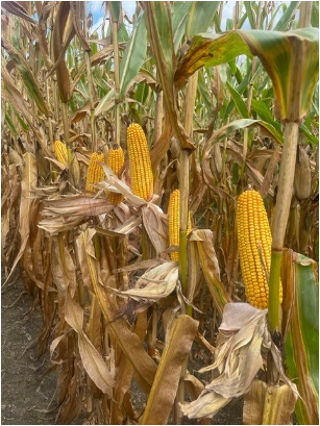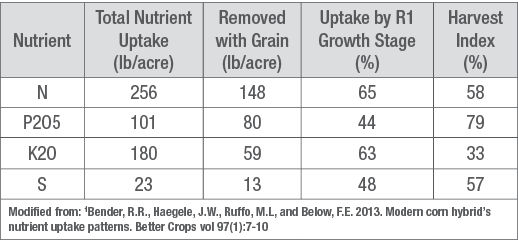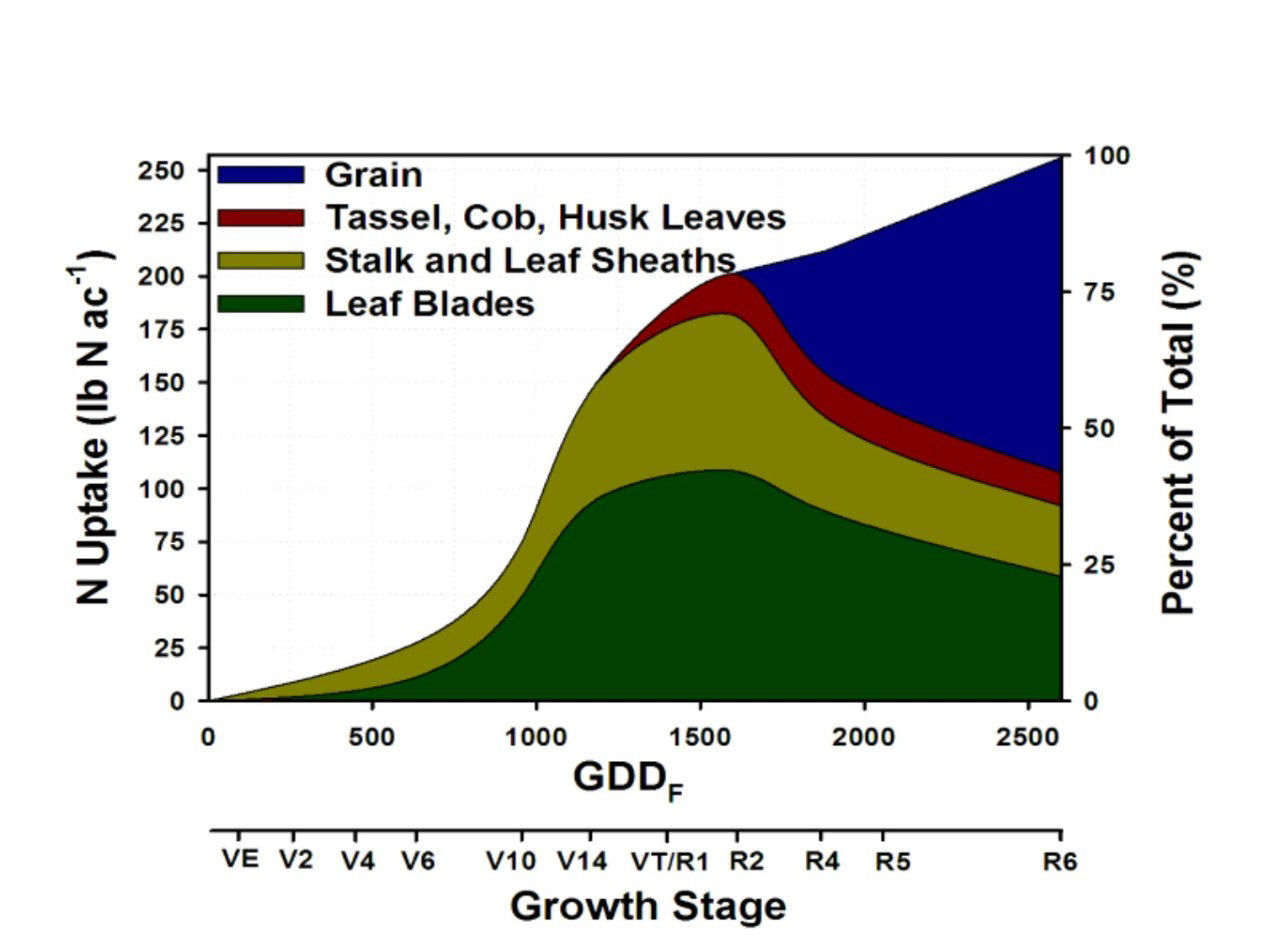3 MIN READ
Corn Nutrient Uptake and Removal
December 7, 2022
Agronomic advancements, particularly in breeding and biotechnology, have pushed corn yields to historic levels. Understanding nutrient uptake and removal to best meet the nutrient requirements of modern, high-yielding corn hybrids are critical for matching fertilizer applications with high yield corn production.
There are two major aspects important for fertilizer recommendations:
- Total Nutrient Uptake or the amount of a nutrient that needs to be acquired by the plant during the growing season.
- Nutrient Removed with Grain and Stover or the amount of a nutrient contained in the grain and stover.
Uptake and Removal
With modern high-yielding corn hybrids, managing the mineral nutrients required for production (i.e., nitrogen (N), phosphorus (P), potassium (K), and sulfur (S)) and those with a high harvest index (percent of nutrient uptake that is removed with the grain/stover) are essential for maintaining yield potential (Figure 1). Nutrient loss from grain and stover removal has a large impact on nutrient availability for the next crop. These losses should be accounted for when developing fertilizer strategies to ensure that adequate nutrients are available for the next crop.
Figure 1. Ears of corn fully-filled indicate a successful match between nutrients required for production and availability.

Nutrients that are not removed by harvested grain remains in leaf, stalk, and reproductive tissues and constitutes the stover that is returned to the field. Corn grown for silage production where all aboveground plant parts are harvested can remove additional nutrients that need to be accounted for in fertility programs. A large percentage of the total uptake of N, P, and S is stored in corn grain; whereas, K is mostly stored in the stover.
Research at the University of Illinois correlated the total uptake and removal of major nutrients (N, P, K, S) with modern corn products under high yield conditions.1 (Table 1).

